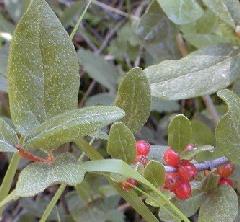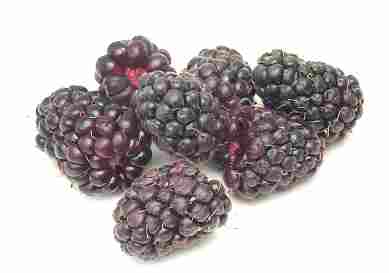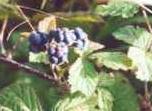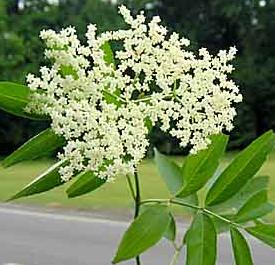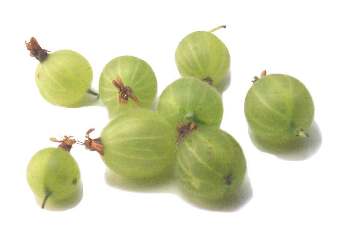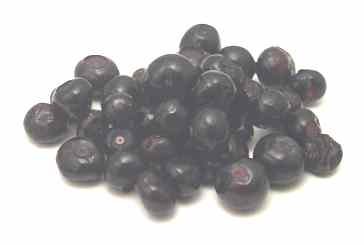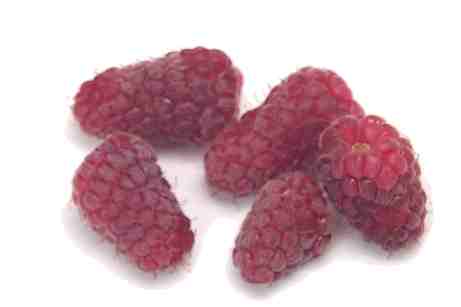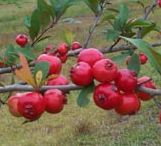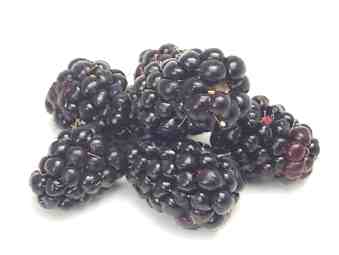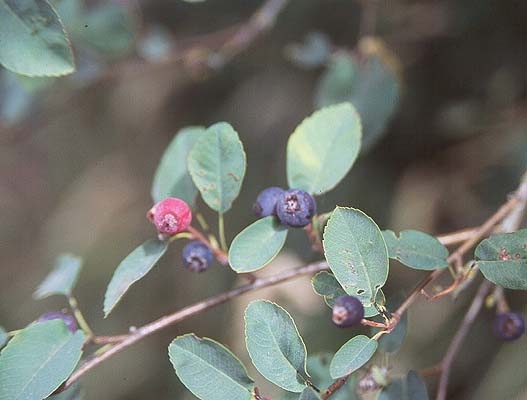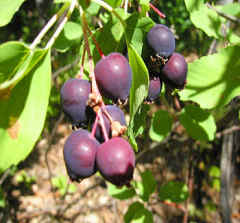德莱拉的书架
文章都是转贴,为自己看起来方便, 谢谢各位作者了。Unusual Fruits of North America and Europe
Dr.DoctorWhat they are and what they taste like!
| Buffaloberries: The Buffaloberry (Shepherdia argentea),is a drought tolerant, sun-loving, nitrogen-fixing, thorny shrub oftenfound in light soil of ravines and stream banks. They sucker readilyand are recommended for shelter belts. White flowers appear in lateApril or early May, and the orange or red fruit ripens in early to latefall. The fruit is bitter, but sweetens after a frost and were used byindigenous people to flavour meat. They are high in iron, and were alsoused as a tonic for blood disorders. They make good jellies and pies.The Buffaloberry can be propagated by seed or by transplanting rootsuckers. |
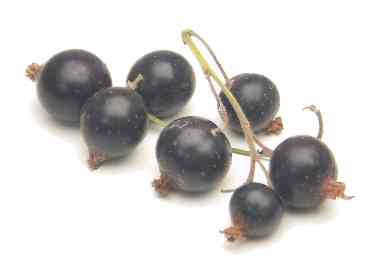 | Black current: Tootart and bitter to eat raw, but they're often used to make syrups,preserves, and the liqueur cassis. Much more popular in Europe (theylike bitter foods there! :) |
| Boysenberries: A boysenberry is a cross between a blackberry, a raspberry, and aloganberry. They are a dark purple almost black in color when ripe.It's softer than a blackberry, but it also lacks the blackberry's largeseeds. It was developed in California, where people still favor them.The bushes / vines have very prickly small thorns. It's best to weargloves when picking them. |
 | Chokeberries or Chokecherry: The Chokecherry (Prunus virginiana)is similar in its habitat preferences to the saskatoon. The whiteflowers, appearing in late May to early June, form long bottle-brushlike clusters. The fruits ripen in August, and can be yellow, orange,red or dark purple in color. The fruit is astringent, but makes goodjellies, jams and sauces. Other parts of the plant were used by nativepeoples for medicinal purposes. The roots were chewed and placed onwounds to prevent bleeding, and the bark was boiled with otheringredients to treat diarrhea and fever. Chokecherries can bepropagated from seed, cuttings, suckers and crown division. Aronia Berry (Chokeberry) Field Day in Iowa on August 16 |
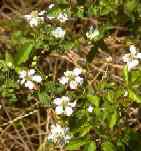
| Dewberries: Theseare similar to blackberries, only they're smaller. They're most popularon the west coast, and particularly Oregon. You'll find it spreadingalong open ground. When the berries are ripe they're hard to pick without squashing them. The berry looks like a blackberry, but usuallyhave far fewer drupelets (the individual lumps on the berry). It isalso somewhat powdery in appearance.
|
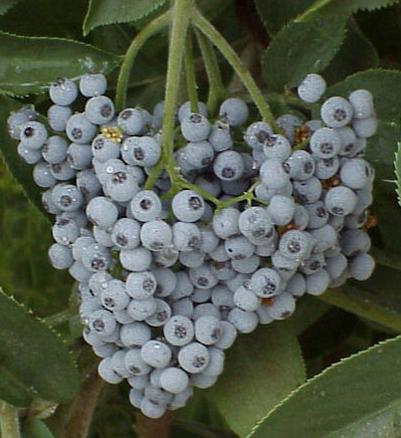 | Elderberries The most common elderberry in the United States is the American elderberry, or sweet elder (Sambucus canadensis).Reaching a mature height of 8 to 12 feet, it is a vigorous grower.Thick clusters of numerous creamy white flowers are borne onfive-stemmed stalks. The elderberry produces 1/4-inch purple-blackberries. The juicy fruit are a rich source of iron and vitamin C.Berries are used for making jelly, jam, pie, juice, and wine. Seeds arequite large and can become a nuisance if they get stuck in your teeth |
 | Figs- They're not that unusual, but for some reason, many Americans havenever eaten a fresh fig. I blame fig newtons and dried figs - thoseare NOTHING like a fresh fig. A fresh fig tastes like a mix of a peachand a strawberry! |
| Gooseberries: Thegooseberry is a large, tart berries in season in June and July. American gooseberries are round and about 1/2 inch to 1 inch indiameter, while European gooseberries are oblong, and about twice thesize of American gooseberries. They're very acidic. They can be green,yellow or reddish. They also come in various degrees of sweetness ortartness; from cooking gooseberries to sweet dessert gooseberries. |
| Huckleberries: The huckleberry is similar to blueberries, and they're great for making preserves and syrups. |
| Loganberries The loganberry is oneof my favorites. It tastes like a mix of strawberries, raspberries andblackberries all combined. It makes great tasting jam! The dark redwhen ripe. |
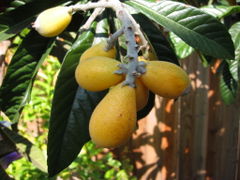 | Loquats(Eriobotrya japonica, aka Japanese plum) are fruit trees indigenous tosoutheastern China, but is now grown in Florida and California. It isan evergreen large shrub or small tree that can grow to 5-10 m tall,but is often smaller, about 3-4 m. Loquats are unusual among fruittrees in that the flowers appear in the fall or early winter, and thefruits are ripe in late winter or early spring. Thefruit is very slightly fuzzy, and a light orange color, ororange-yellow. and have a large pit in the middle (or even several pitsin the very center; up to 7, but usually 1 or 2)The fruit is a creamywhite inside and is sweet (with some subacid or acid) if left to ripenon the tree before picking. Thefruit should be peeled prior to eating; the skin, though thin, can bepulled off manually if the fruit is ripe. Also, the seeds MUST beremoved before use, as they are toxic! It does make a wonderful jelly,and will grow in the deep South of the US. The tree won't bear fruituntil it is about 10 yrs old (and the winter conditions have to beright in order to bear fruit). Theloquat is comparable to the apple in many aspects, with a high sugar,acid and pectin content. It is eaten as a fresh fruit and mixes wellwith other fruits in fresh fruit salads or fruit cups. Firm, slightlyimmature fruits are best for making pies or tarts. The fruits are alsocommonly used to make jam, jelly and chutney, and are delicious poachedin light syrup. A type of loquat syrup is used in Chinese medicine forsoothing the throat, like a cough drop. Loquats can also be used tomake wine. Loquats are easy to grow and are often also grown as anornamental tree. |
| Mayhaws- a small (1/2 to 3/4 inch in diameter) crabapple-like fruit that growson a type of thorny hawthorne tree. It ripens from mid-April to earlyMay, from which the name, mayhaw, originated. The mayhaw is a wildnative fruit tree found along river bottoms and swamps from east Texas,east to Georgia and Florida, and especially throughout Louisiana. Itdoes well in swamps or drier, better-drained land and best in fullsunlight. The strained fruit is most often used for making jelly, syrupand wine. The pulp is sometimes made into jams, butters and pies. Fewpeople eat the fruit raw. You can shake the tree and gather the fruitfrom a bed sheet or piece of plastic spread under the tree.
|
 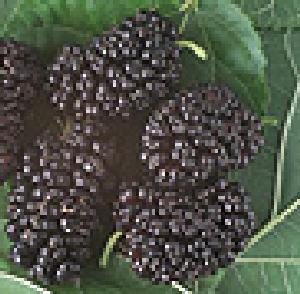 | Mulberries The mulberry grows on a tree that can get quite large. They are black and are so fragile that almost no markets carry them. Theyare similar to blackberries, just larger and much more fragile). Theflavor is very mild, and they are mildly sweet. I doubt whether manypeople would prefer them to blackberries or raspberries, but if youhave access to a tree, they are very productive! |
| Olallieberries: The olallieberry is a cross between a youngberry and a loganberry is black and fairly sweet. It is popular in California and Oregon. |
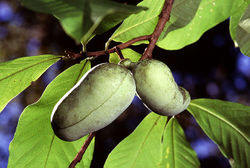 | Paw-Paws: Also known as a prairie banana, Kentucky banana, or Ozark banana, issmall tree with large leaves and fruit, native to southeastern NorthAmerica. Also spelled paw paw, paw-paw, and papaw. The pawpaws areshrubs or small trees, reaching heights of 2 to 12 m tall. The fruit isa large edible berry, 2 to 6 inches long and 2.5 to 3 inches wide,weighing from a few ounces to a pound, with numerous seeds. It is greenwhen unripe, maturing to yellow or brown. It has a flavor somewhatsimilar to both banana and mango, varying significantly by variety, andit has more protein than most fruits. |
| Saskatoons- It is also called the Western or Pacific Serviceberry, SaskatoonBerry and Alder Leaved Serviceberry. They are very similar toblueberries. It is a deciduous shrub/tree, to 40 ft (12 m), spreadingto erect. They like well-drained moist soils. They are cold and droughttolerant. Flowers small, white, fragrant appear in early to late May orearly June, and the purple fruit ripens in early to late July. Fruitis 1-1.5 cm, rounded, purple-black, edible, sweet. Hardy to USDA Zone4. Native range from southern Alaska to California, east to theDakotas, Nebraska, New Mexico, and Arizona, mostly along river banksand moist thickets and forests. Apparently, the fruit tastes a bitlike a blueberry. The berries have a pleasing and unique flavor, andare also high in iron and copper. They are good eaten fresh or indesserts. Native peoples used them in soups, stews and pemmican. Theywere also used in medicines for stomach and liver problems, and thejuice was used as a dye. They can be propagated from seed, cutting, orsuckers.
|
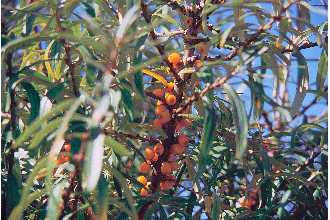 | Seaberries- has bright yellow-orange to red berries that are 7 times higher invitamin C than lemons. They're also every bit as tart! . Likecranberries, when sweetened, it is delicious in juices and jams. Theshrubs grow to 6 to 18 feet when mature, Russians and eastern Europeansmake the berries into sauce, jam, juice, wine, tea, candy, and even icecream. The berries are also known as "Siberian pineapple" |
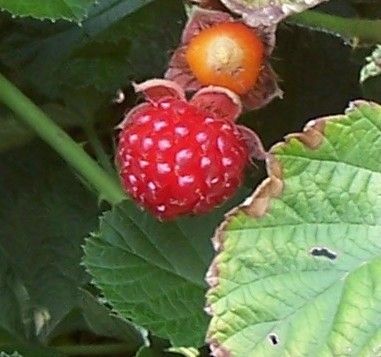 | Tayberries:This is popular in Oregon. It comes from Scotland, in 1977, near theTay River, when a raspberry was crossed with an Aurora trailingblackberry (I've also heard it was a cross between a loganberry and ablack raspberry). It's flavor is aromatic, similar to the Loganberry,with a bit more acidity. I prefer them to raspberries! |
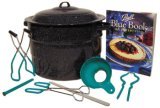 | Home Canning KitsThis is the same type of standard canner thatmy grandmother used to make everything from applesauce to jams andjellies to tomato and spaghetti sauce!. This complete kit includeseverything you need and lasts for years: the canner, jar rack, jargrabber tongs, lid lifting wand, a plastic funnel, labels, bubblefreer, and the bible of canning, the Ball Blue Book. It's much cheaperthan buying the items separately. You'll never need anything elseexcept jars & lids! To see more canners, of different styles, makes and prices, click here!For more information and current pricing: |




